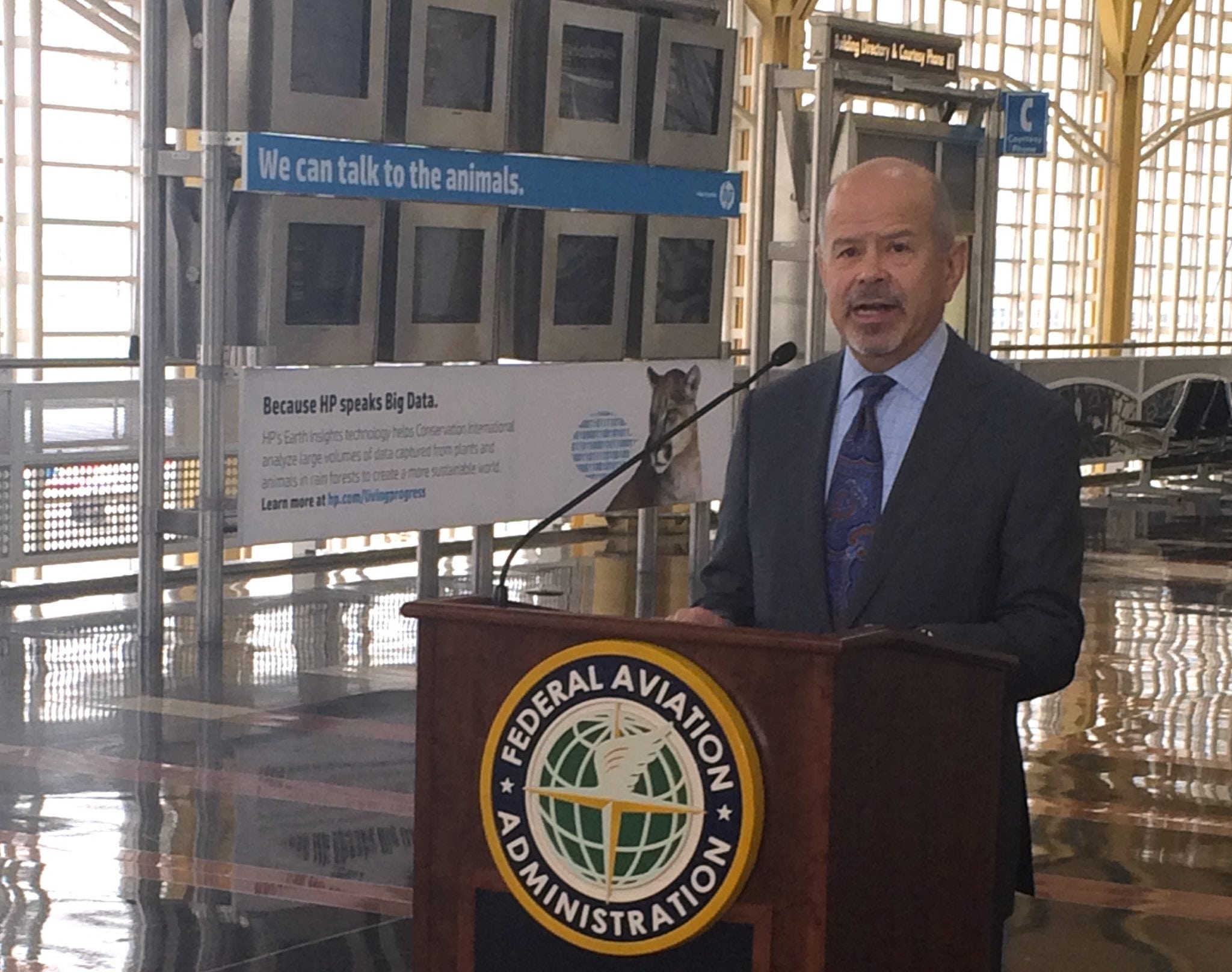[Avionics Today 05-01-2015] “As of today, Host is history,” FAA Administrator Michael Huerta announced yesterday morning at a press conference regarding the rollout of the new Air Traffic Control (ATC) En Route Automation Modernization (ERAM) system held at the Washington Reagan National Airport in Arlington, Va. ERAM, which was contracted in 1990 to replace the agency’s antiquated Host system, has finally taken over at all 20 ATC centers in the United States, enabling many of the NextGen air traffic modernization initiatives that the FAA is currently working to put in place.
 |
| Michael Huerta, FAA Administrator, at Ronald Reagan National Airport Rollout of ERAM. Photo: Avionics Magazine/Juliet Van Wagenen |
Prior to now, the FAA and the National Air Traffic Controllers Association (NATCA) have been working with controllers to toggle back and forth between the old and new systems as they gradually brought ERAM online. As of yesterday, however, Host has been completely shut off allowing ERAM to officially take over as the core functionality for ATCs across the country.
The FAA and industry partners, most notably Lockheed Martin, have designed ERAM to support satellite-based systems such as Automatic Dependent Surveillance-Broadcast (ADS-B), which is touted as more accurate than current radar and will take over as the agency’s primary source for tracking aircraft in 2020. The new system will also eventually allow for advanced ATC practices such as Terminal Flight Data Management (TFDM) and Required Navigation Performance/Area Navigation (RNP/RNAV).
“We are now able to handle air traffic in a much more collaborative way. We can see a much bigger and richer picture of our nation’s high altitude air traffic,” Huerta told reporters, noting that the system allows each controller to handle more aircraft over a larger area, increasing safety, capacity and efficiency. “ERAM processes data from nearly three times the number of sensors as the old system. It can track and display nearly double the number of high altitude flights, and enable controllers to handle additional traffic more efficiently. It’s going to make all air traffic flow more smoothly across the country.”
While the FAA and partners tout the rollout of the system as success, the program is millions of dollars over budget and least five years behind schedule, with its original rollout docked for 2010. Although the FAA is staying quiet on the final price tag, the project was originally slated to cost $2.1 billion, but has been famously in the red as system anomalies and budget constraints kept the system from going online.
“In 2010, when the Obama administration first began looking into ERAM, ERAM was at that point about four years behind schedule and $330 million over budget,” Huerta said when asked by reporters about the final cost of implementation. “The program was rebaselined in 2011 with the goal to complete development by 2014. The sequester delayed implementation by about another 7 months and increased costs by about another $42 million, but we did hit the milestones we laid out when you adjust for that.”
Going forward, the rollout of ERAM means that NextGen initiatives that were stalled, such as ADS-B, can finally get under way and it is clear the agency sees the system as laying the groundwork for future advancements across the National Airspace System (NAS).
“You can think of ERAM as a foundational technology, an iPad if you will, and we can build applications on top of it that enable us to provide much more robust capability and functionality for controllers to use,” said Huerta.
ERAM enables en-route controllers at each center to track approximately 1,900 aircraft at a time — an 800-aircraft boost over the legacy system. Its coverage also extends out beyond airport boundaries, allowing controllers to handle additional traffic more easily. Controllers also benefit from the ability to share and coordinate information seamlessly between centers, kickstarting 3-mile separation between aircraft over the 5-mile separation previously required, thus upping capacity in the airspace. Additionally, the new system offers improvements in flight plan processing, supporting automatic transitions between centers even if a plane diverts from its planned course, increasing efficiency during less-than-perfect conditions such as bad weather and high congestion.
“Controllers will now be able to better manage flights from gate to gate. With tools that are now available through ERAM, our air traffic computers can generate specific trajectories and speeds that will allow controllers to make the most efficient use of the airspace and cut down on congestion,” said Huerta. “With the more precise picture that ERAM gives us, there’s a greater opportunity for more efficient spacing of aircraft and to use NextGen procedures that save fuel and cut down on emissions.”
While ERAM currently works to increase flexibility in routing around congestion, bad weather, etc., eventually the system will also work in conjunction with other technologies to allow ATCs to alert pilots and have them change course ahead of time.
“Eventually … ERAM will allow controllers to push a button and send a written message to a pilot in advance, allowing them to change course and steer around storms and congestion, once again improving on-time arrival and decreasing delays,” said Huerta.